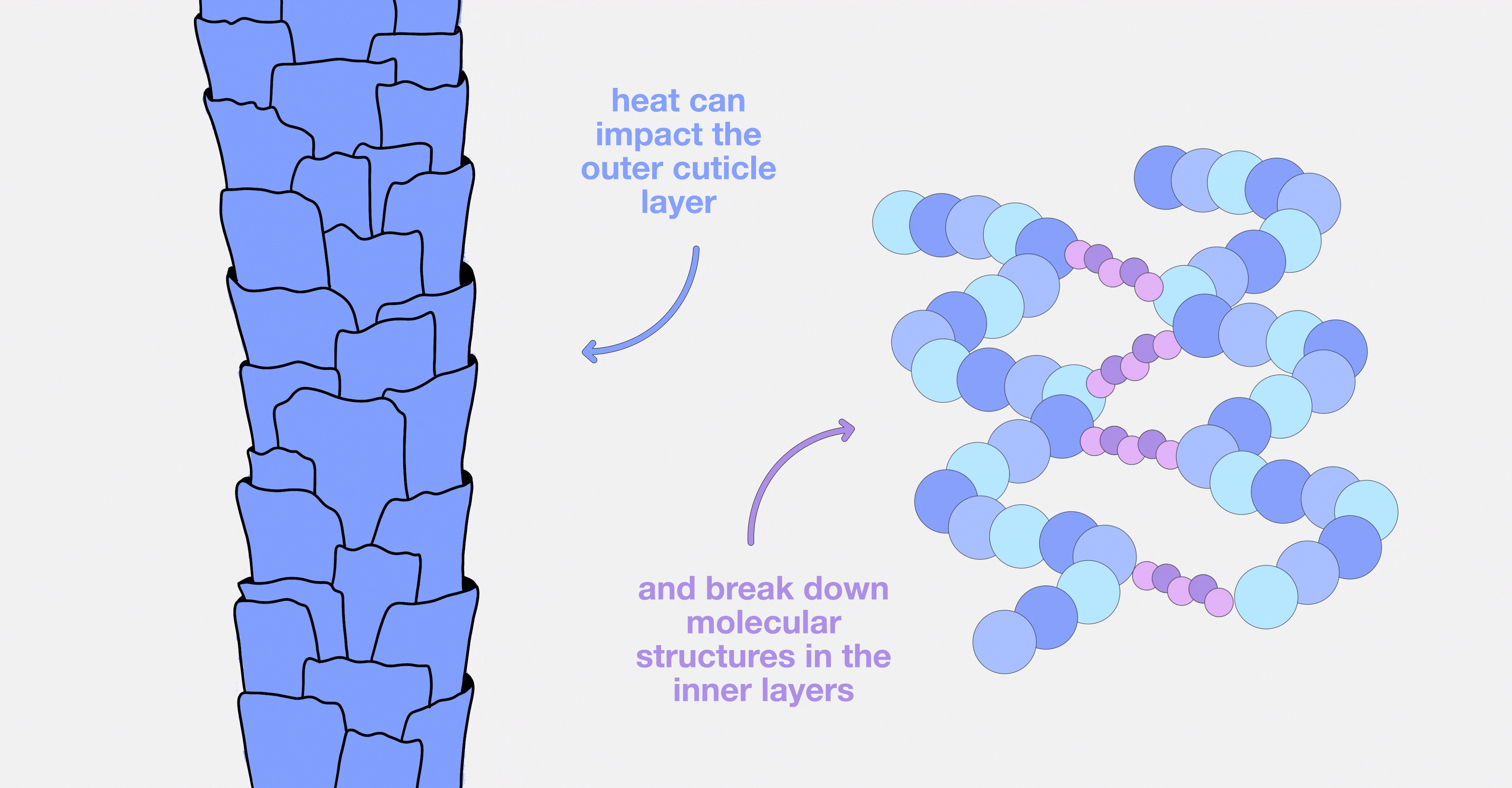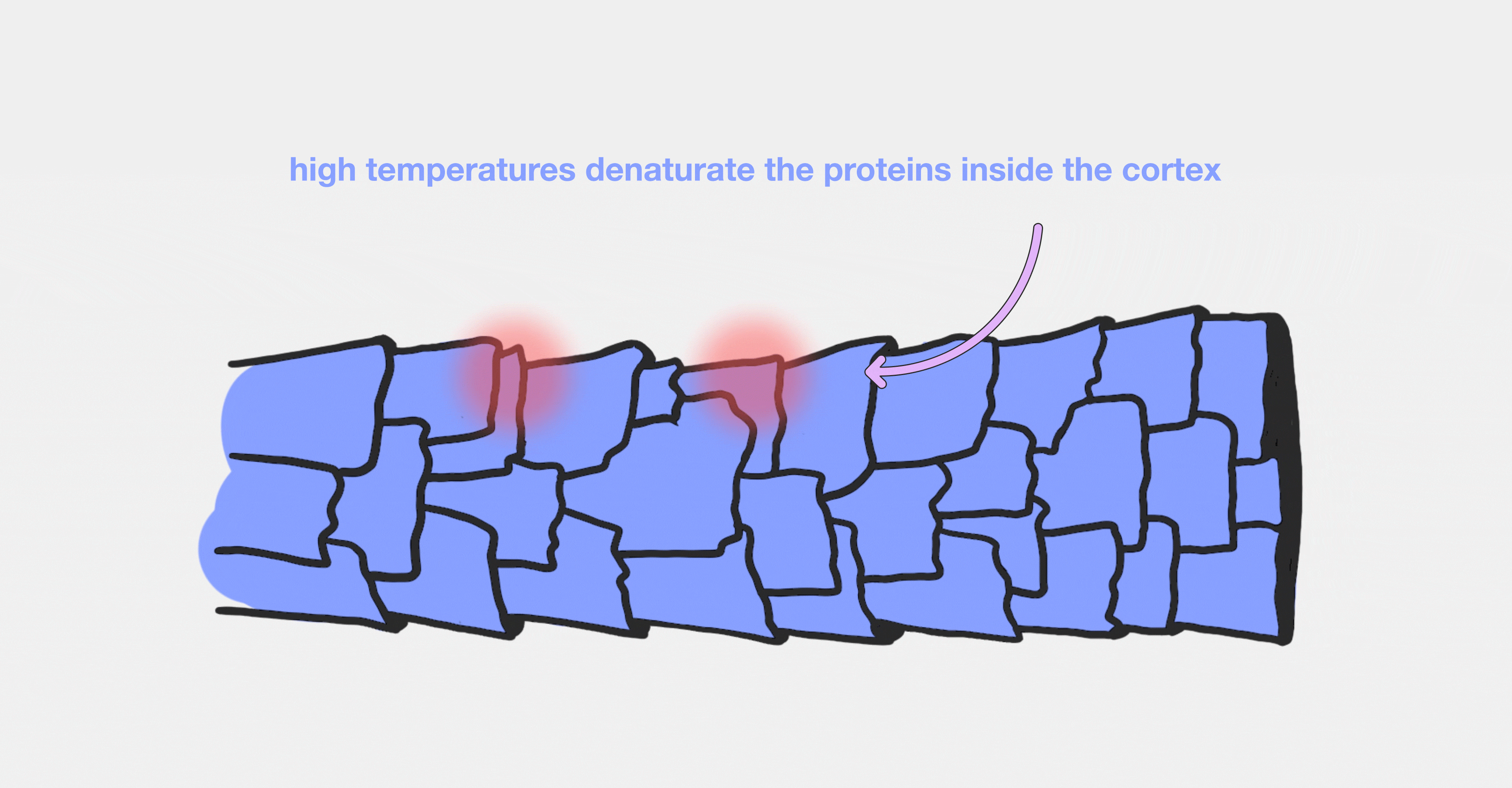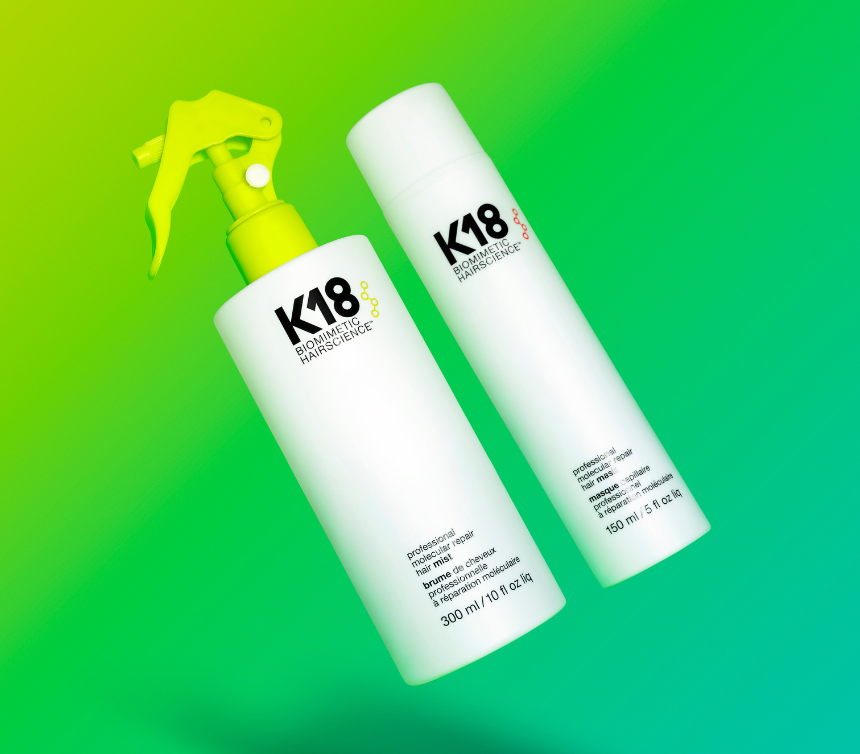This Science Sunday, we’ll cover how your hot tools work, what heat damage looks like, and how you can beat the heat to keep hair strong, healthy, and looking hot (in a good way).
how do hot tools work?
Hairdryers, curling irons, and straighteners work by using heat to break the chemical bonds in hair. In the process, keratin chains that make up hair’s core structure are repositioned into straightened, curled, or blown-out shapes. When hair cools down, the broken bonds reform, staying in its new temporary shape.
The thing is, overexposure to high temperatures from heat tools can cause damage to all layers of hair. This weakens its strength and elasticity, and degrades its structure, leading to dull, dry, and brittle hair.

cuticle damage
The cuticle is the outermost layer of hair, composed of overlapping shingle-like cells that protect hair from the outside world. Fun fact: The cuticle also happens to be the most heat-resistant part of hair. Strong, cross-linked proteins that make up healthy cuticle cells serve as a built-in heat protectant—to a certain extent—and can withstand temperatures more than 482°F/250°C before breaking down. So what causes the cuticle to break down?
Most of us have cuticle damage from daily damage by just living with hair. Everyday use of hot tools can cause your cuticle cells to lift and separate, leaving the keratin chains in the deeper layers more vulnerable to damage. Curious about cuticle damage? Learn more here.
Hot curling and straightening irons compress and add tension to the hair fibers, creating friction and further weakening cuticle cells as the hair makes contact with the iron. Hair that is already damaged from chemical services (like bleaching and coloring) has a severely compromised cuticle already and is more susceptible to further cuticle breakdown and damage from heat tools. With greater temperature, comes greater surface damage.

denaturation = peak thermal damage
Past the cuticle, the inner layer of hair—the cortex—is composed of interwoven polypeptide chains that interact with each other to form larger, rope-like structures. This is the site of the most severe form of thermal damage: denaturation.
Denaturation describes the breakdown of the protein structure of hair. Exposure to temperatures of 392°F/200°C or more begins to denature the keratin proteins in the cortex, causing them to lose their strength and elasticity as they start to melt and shrink.
heat degrades hair color
You know what else can break down? Hair color. Overexposure to heat also decomposes hair’s chromophores—the molecules that determine its color—especially tryptophan, an amino acid found in the protein structure of hair. The breakdown of tryptophan causes white and bleached hair to yellow and darken. When hair is dyed, applying heat can strip out the toner from the chemical color service and accelerate degradation, making the color appear faded and more brassy.
heat styling wet hair causes bubble hair
Using hot tools on wet hair can cause bubble hair, aka gas-filled bubbles in the hair shaft. Hair fibers contain air-filled spaces called vacuoles, and moisture enters these empty pockets when hair is wet. As heat is applied, the moisture and gas inside of these vacuoles expand, forming bubble-shaped deformities in the hair shaft that leave hair bent, fractured, and discolored. This phenomenon can occur when hair is exposed to temperatures around 345°F/175°C to 419°F/215°C.
Bubble hair can occur in otherwise-healthy hair. But chemical services can compromise the integrity of the hair strand structure, making it easier for hair to bubble under heat.
Remember those wet-to-dry hair tools? Using hot tools on wet hair will cause the water to evaporate rapidly, creating stress and cracks in the cuticle layer. The moisture in the outermost cuticle layer dries first, causing the outer cuticle cells to contract more rapidly than the inner cuticle and cortex layers. This asynchronous contraction creates pressure that produces cracks in the cuticle.
how to prevent heat damage
As always, a holistic approach is key to haircare is the best defense against damage—heat-induced or otherwise. Look for ingredients like Avocado Oil, which, thanks to its 520°F heat point, can protect hair at these higher temperatures. By creating a layer between the outermost barrier of the hair and potentially harmful thermal damage, you can help keep heat damage at bay.
The Heat Damage Defense Checklist
✔️Keep the temperature of your tools under 347°F/175°C
✔️Use a heat protectant
✔️Avoid using flat irons or curling irons on wet hair
✔️Choose a blow dryer over a blow dryer brush for less mechanical damage



